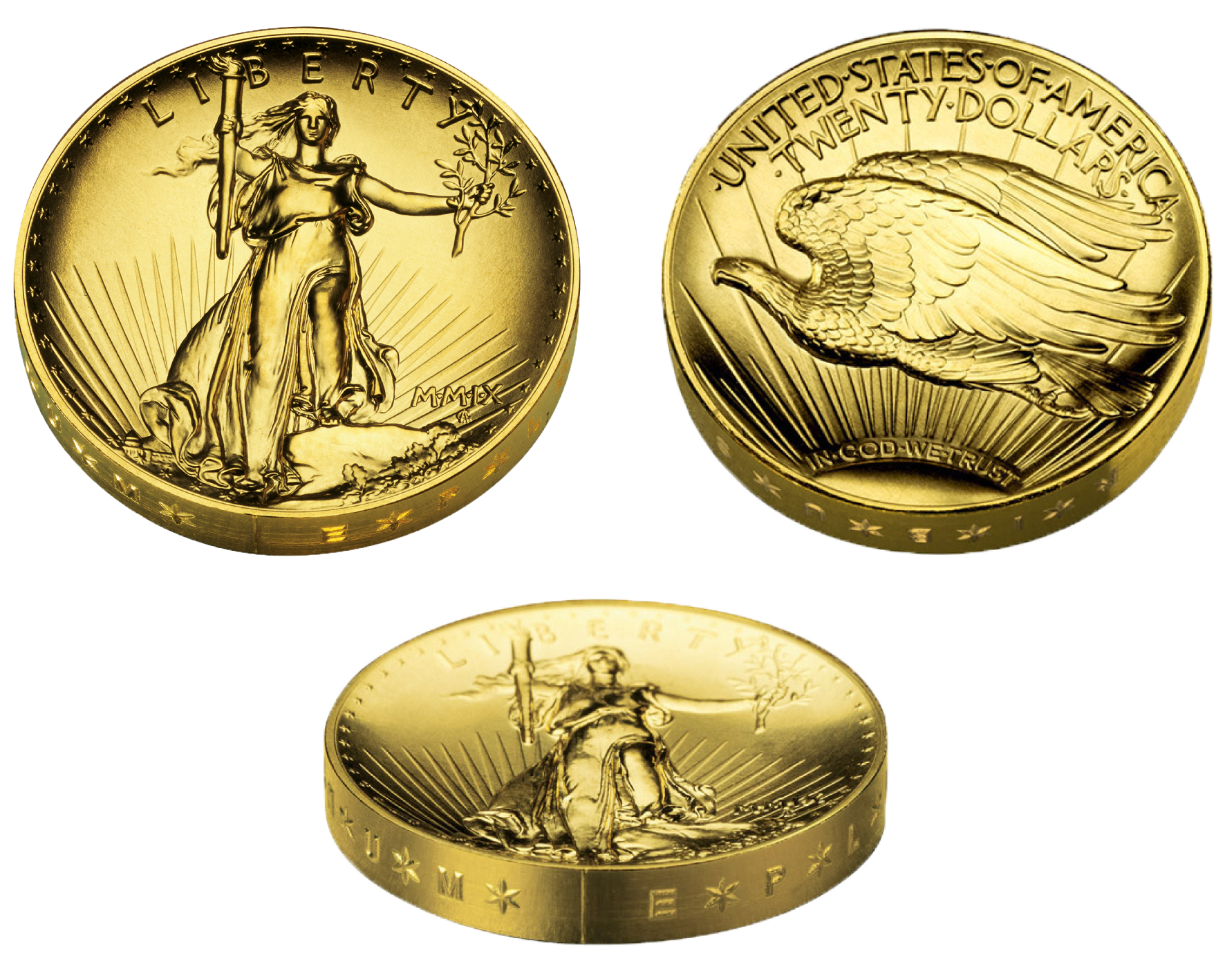The 2009 $20 Saint Gaudens Ultra High Relief gold coin is one the most iconic coins ever struck at the United States Mint. It's a coin that put the United States Mint's talents on display for not only the Nation but the entire world. This coin's unique ultra high relief strike and sheer beauty have made it one of the most beloved gold coins by collectors worldwide. This is definitely a must-have coin for any true collector.

Many people believe this coin was made to commemorate the Ultra High Relief pattern piece design by Augustus Saint-Gaudens in 1907. However, the coin actually replicates and commemorates the 1907 High Relief Piedfort, a priceless experimental pattern coin that is about the size of a classic $10 Eagle but twice as thick. Piedfort is a French term that means double the thickness. America liked the idea of a smaller but thicker coin so much that it tried to copy French coinage.
Unfortunately once the minting process began the dies kept breaking which in turn made striking this type of coin not feasible. It's reported that eight of these experimental Ultra High Reliefs were produced. Two of these were retained in the Mint Cabinet Collection and are now in the Smithsonian National Numismatic Collection. The other six were destroyed.
With the advancement in technology, in 2009 the U.S. Mint was able to strike 114,427 pure .9999 fine 24 karat gold versions of the double-thick Ultra High Reliefs as part of the American Eagle program. Today, flawless MS 70 versions considered "must-haves" by investors and collectors of American gold coins. Proof-Like (PL) and Deep Proof-Like (DPL) examples are very rare and are highly sought after collector pieces.